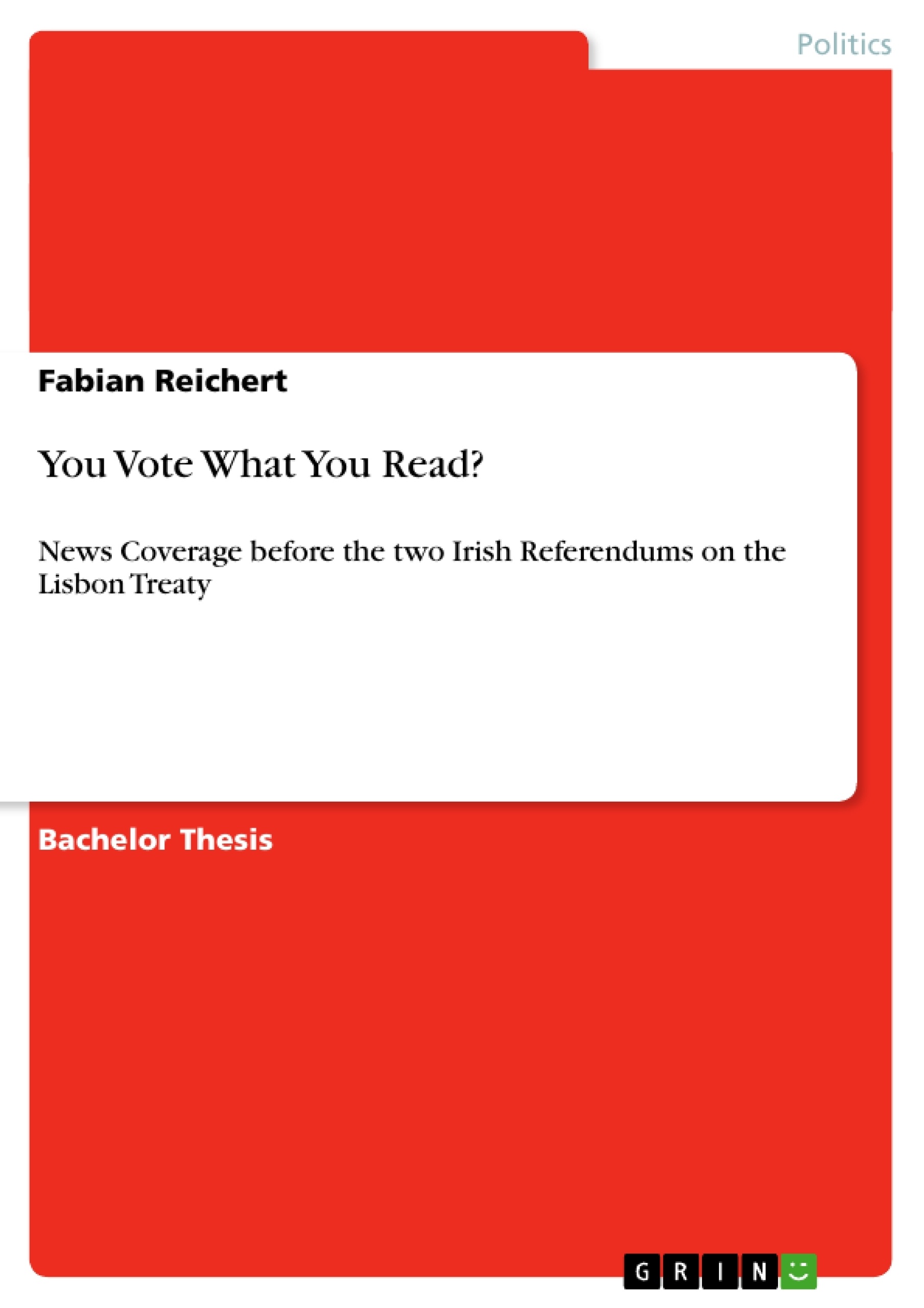The Eurobarometer recently showed that for 41% of EU citizen daily newspapers are the main source of information about European topics. Also for those citizens, who decided on the adaption of the Lisbon treaty in the two nationwide referendums in Ireland. But as many media researchers showed, news coverage is biased (Entman 1993, Scheufele 2003). It has to be biased, because it is simply not
possible to report the whole reality in one article (Downs 1957).
One aspect of news bias is known under the term framing. Entman (1993: 52) defines to frame as follows “to select some aspects of a perceived reality and make them more salient in a communicating text, in such a way as to promote a particular problem definition, causal interpretation, moral evaluation, and/or treatment recommendation.”
A different framing of the same ballot can induce individuals to make different choices. Such effects are known as framing effects (Scheufele 2003, de Vreese 2005a. This paper follows these hints and examines the news coverage before the two Irish referendums on the Lisbon treaty. Applying a content analysis of the two most selling
Irish newspapers, The Irish Times and the Irish Independent, it aims to make statements about the framing of the treaty in the news and to give evidence if the question in the title just sounds good or contains some truth.
Inhaltsverzeichnis (Table of Contents)
- Introduction
- Research Question and Procedure
- The Treaty of Lisbon
- Theory
- EU Referendums
- The Media
- Framing
- Framing Effects
- Equivalency Framing Effects
- Emphasis Framing Effect
- Framing EU Referendums
- Equivalency Framing of the Lisbon Treaty
- Emphasis Framing of the Lisbon Treaty
- Method
- Newspapers
- Article Selection Process
- Measuring Frames
- Methodological Problems
- Results
- Presentation of the Results
- Discussion of the Results
- Conclusion
Zielsetzung und Themenschwerpunkte (Objectives and Key Themes)
This study analyzes the framing of the Lisbon Treaty in Irish news coverage leading up to the two Irish referendums on the treaty. It aims to understand how framing influenced voting behavior, exploring the relationship between media coverage and public opinion.- The impact of news framing on public opinion in EU referendums
- The role of framing in shaping voter decisions on complex issues
- The specific framing strategies used in the Irish news coverage of the Lisbon Treaty
- The relationship between framing and voting behavior in the two Irish referendums on the Lisbon Treaty
- The potential implications of framing for democratic decision-making in the EU
Zusammenfassung der Kapitel (Chapter Summaries)
- Introduction: This chapter introduces the research question and provides background information on the two Irish referendums on the Lisbon Treaty. It discusses the contradictory results of the referendums and highlights the significance of media framing in explaining these outcomes.
- Theory: This chapter delves into the theoretical framework for the study, reviewing existing theories on EU referendums, media influence, and framing effects. It explores how framing can impact voter perceptions and decisions.
- Method: This chapter outlines the methodology employed in the study, detailing the selection of newspapers, the article selection process, and the measurement of framing strategies. It also discusses potential methodological challenges.
- Results: This chapter presents the quantitative results of the analysis, highlighting the prevalence of different framing strategies in the news coverage of the Lisbon Treaty. It examines the patterns of positive and negative framing employed in the two referendums.
Schlüsselwörter (Keywords)
This study focuses on the impact of framing in news coverage of EU referendums, specifically the Irish referendums on the Lisbon Treaty. Key themes include media influence, public opinion, voting behavior, framing effects, equivalency framing, emphasis framing, and the role of media in democratic decision-making.- Quote paper
- Fabian Reichert (Author), 2010, You Vote What You Read?, Munich, GRIN Verlag, https://www.grin.com/document/192752



